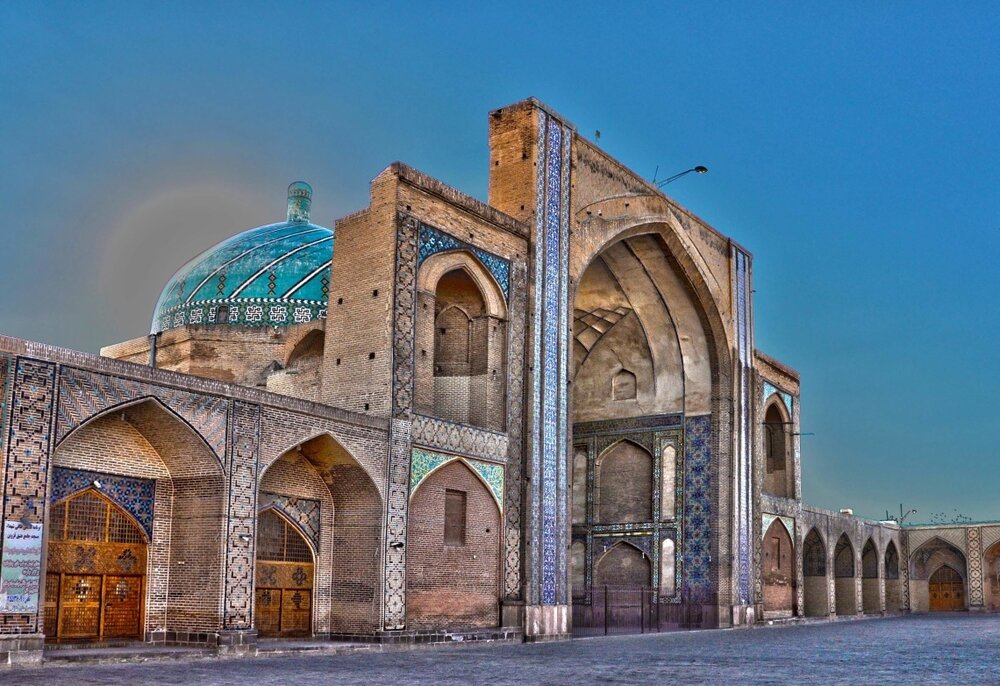Archaeologists discover ancient layers beneath Qazvin mosque

TEHRAN – A team of archaeologists has discovered additional traces of ancient layers under the Jameh Mosque of Qazvin, which is one of the oldest Islamic structures in Iran.
An archaeological team has found ancient layers including remnants of a stone flooring and wall beneath Masjed-e-Jameh Atiq (Jameh Mosque of Qazvin), Qazvin province’s deputy tourism chief said on Saturday.
The carved two trenches measuring one meter by one meter next to the mosque’s northern iwan (portico) and its western minaret, Ehsan Nourani said.
The archaeologists searched for possible ancient deposits in chronological order until they reached intact soil, the official said.
The excavation conducted at the trench near the iwan yielded four levels of flooring made of cement, lime mortar, flooring bricks, and plaster-coated bricks, the official explained.
All in all, the experts managed to identify seven architectural stages through the trenches.
Narratives say that the mosque was originally built on the site of a Sassanid fire temple. It was subsequently developed and expanded over different periods.
According to Archnet, the mosque’s construction was first ordered in 807 (192 AH) by the Abbasid Caliph Harun Al-Rashid. Under the Seljuk leaders (1038-1194), two iwans were added to its north. After a renovation in the eleventh century, the twelfth century saw the construction of the main prayer hall, a dome, a courtyard, and a religious school. Under the Safavids (1501-1732), the southern and western iwans and arcades were added, and the Qajar period (1779-1924) witnessed a major renovation and expansion.
The mosque follows the four-iwan typology; each iwan is centered on a large courtyard with a central fountain. This courtyard is one of the largest mosque courts in Iran, measuring nearly four thousand square meters. Its two main prayer halls are located along the north and south sides of the court. Two narrow arcade halls, five meters wide, run along the east and west.
The mosque is constructed of brick, which is clad with tiles and inscriptions in some areas. The main prayer hall is the most ornamented part of the mosque. Both its mihrab and minbar are made of stone, and the upper part of the walls are ornamented in different floral patterns and small polychrome tiles.
In Islamic countries, the term Jameh mosque is referred to as a vast center for community worship and Friday prayer services.
AFM
Leave a Comment